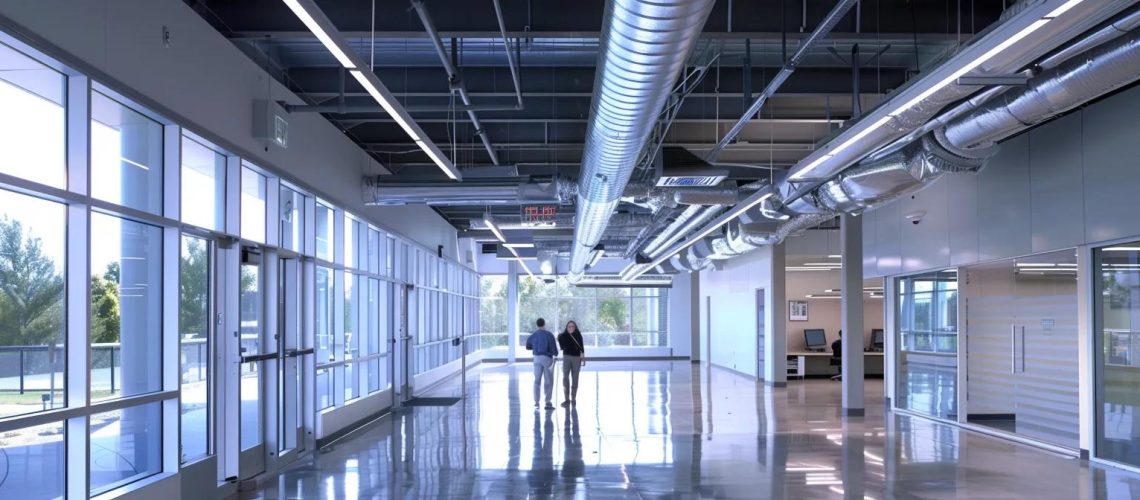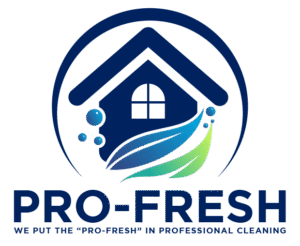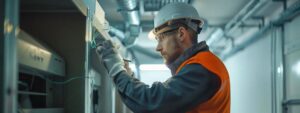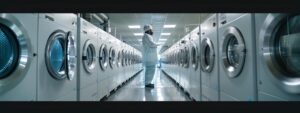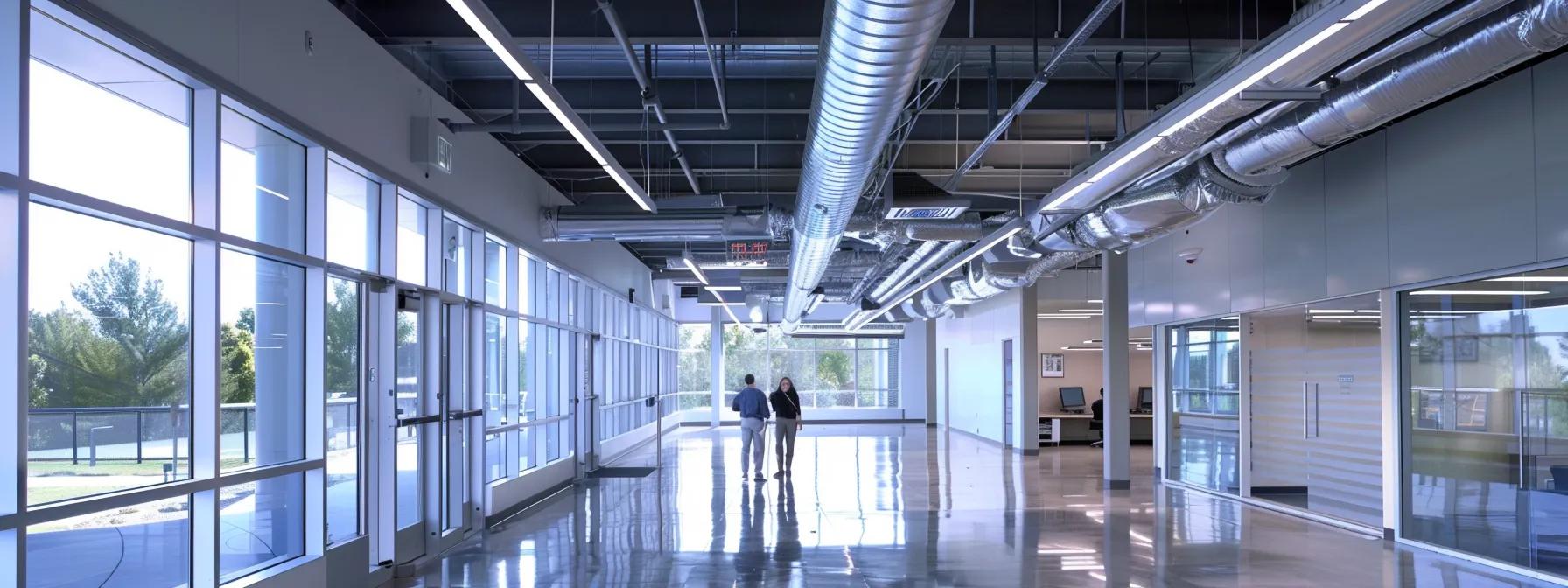
How Duct Replacement Can Lower Your Energy Bills and Improve Efficiency
Introduction
Ductreplacement is an essential home improvement strategy that can immediately lower energy bills and boost HVACefficiency. Outdated, leaky, or poorly insulated ducts force your system to work harder, increasing energy waste and utility costs. In the Greater Houston area, property owners are choosing ductreplacement to achieve balanced indoor climates, enhanced air quality, and improved system performance. This article outlines the benefits of new air ducts—from energy and cost savings to enhanced comfort and healthier environments—and provides practical insights on performance improvements, identifying problems, and maximizing long-term savings.
What Are the Key Benefits of DuctReplacement for Energy Savings?
Upgrading ductwork can immediately reduce energy losses caused by air leaks and poor insulation, lowering overall energy consumption and utility bills.
How Does Replacing Old Ducts Improve EnergyEfficiency?
Replacing worn or inefficient ducts ensures that conditioned air reaches every room with minimal loss. Modern ducts use advanced materials and sealing technologies that limit air leakage to under 5%, compared to leaks of up to 30% in older systems. As a result, properly replaced ducts can cut energy use by 20% or more. This reduction means your HVAC system no longer compensates for lost air, cutting wasted energy and reducing operating costs. Better insulation in new ducts also helps maintain controlled temperatures until the air reaches living spaces, promoting year-round comfort.
In What Ways Does DuctReplacement Enhance Indoor Air Quality?
New ductwork reduces the accumulation of dust, allergens, and contaminants that thrive in older, corroded systems. Manufactured with smooth-surface materials, modern ducts resist mold and bacterial growth. Improved air circulation and better filtration lower airborne irritants, benefiting those with allergies or respiratory issues. Often, ductreplacement includes installing specialized filters that enhance cleaner air recirculation, resulting in fewer asthma or allergy symptoms and contributing to a healthier indoor environment while protecting HVAC components from dust and debris.
How Can New Ductwork Increase HVAC System Performance?
Installing new ducts optimizes the entire HVAC system by ensuring even air distribution, reducing energy losses, and lowering system strain. Enhanced airflow decreases the workload on your air conditioner or furnace, reducing the risk of costly repairs and extending equipment longevity. Additionally, modern ductwork minimizes noise from rattling or vibrations, providing a quieter and more responsive environment. These improvements lead to immediate comfort enhancements and significant long-term savings.
What Are the Common Signs You Need DuctReplacement?
It is vital to recognize when your air ducts are no longer performing well, as failing ducts can lead to higher energy bills and inconsistent comfort.
How to Identify Leaks and Damage in Your Air Ducts?
Visible signs such as disconnected sections, rust, or gaps indicate duct damage. Even in the absence of obvious damage, symptoms like inconsistent airflow or unusual noises may reveal internal leaks. Professional inspections using pressure tests or thermal imaging can uncover hidden leaks. Regular checks in accessible areas like basements or attics help identify early signs of wear and tear.
When Does Poor Airflow Indicate DuctReplacement Is Necessary?
Uneven heating or cooling throughout your property signals that some ducts may be compromised. If certain rooms receive little to no conditioned air, it suggests air is escaping through gaps or poorly sealed joints. Reduced airflow not only forces HVAC systems to work longer—thus increasing energy consumption—but can also lead to hot or cold spots. Addressing these symptoms by replacing ductwork can restore even airflow and improve overall comfort.
Can Increased Energy Bills Signal the Need for New Ductwork?
A steady rise in energy bills, without changes in usage, often points to duct system inefficiencies. Leaks allow conditioned air to escape into unconditioned areas, forcing the HVAC system to work harder. Monitoring bills alongside HVAC performance can reveal if aging ducts are a contributing factor. Studies have indicated that duct leakage can be responsible for up to 30% energy loss in extreme cases, making ductreplacement a smart financial and environmental decision.
How Does Ductwork Affect Your Energy Bills?
Faulty or poorly insulated ductwork forces your HVAC system to compensate for energy loss, which directly increases heating and cooling costs.
What Role Do Air Leaks and Poor Insulation Play in Energy Loss?
Gaps, cracks, or poor insulation in older ducts cause significant air loss, compelling the HVAC system to run continuously. For example, a 20%-30% leak rate drastically lowers system efficiency, meaning more fuel or electricity is used to maintain a consistent indoor temperature. Sealing these leaks can improve performance by around 20%, proportionally reducing energy costs.
How Does Duct Sealing and Insulation Complement Replacement?
Proper sealing and insulation are critical when installing new ductwork. Quality replacement ensures that ducts are airtight and well-insulated with advanced materials, which minimizes energy loss and maintains consistent airflow. Professional installers often bundle sealing and insulation with repair services, providing a comprehensive upgrade that can significantly lower energy bills and improve HVAC performance over time.
Why Is Proper Duct Design Important for Reducing Energy Costs?
Duct design plays a crucial role in system efficiency. Well-designed ducts are carefully sized and strategically routed to balance airflow throughout a building. Poor design, on the other hand, can create pressure imbalances and friction losses, forcing the HVAC system to work harder. Engineers use building codes and computer modeling to ensure ducts are optimized to reduce energy loss and meet system requirements, thereby cutting excess operating costs.
What Is the Typical Cost of DuctReplacement and Its ROI?
Although the upfront investment in ductreplacement can vary, the long-term savings often outweigh the initial cost.
How Much Does Professional DuctReplacement Usually Cost?
For a standard residential property, professional ductreplacement typically ranges between $1,500 and $4,000. The price can increase for more complex systems or larger properties. A detailed quote from a certified HVAC contractor will usually include material costs, labor, disposal of old ducts, and sometimes extras like insulation and sealing services. Warranties and service guarantees further enhance the value of the investment.
What Financing Options Are Available for DuctReplacement?
To make the investment more manageable, many HVAC companies offer payment plans or financing programs. Additional incentives such as utility rebates, energyefficiency programs, and government grants may also be available. Home improvement loans or lines of credit are further options for funding a ductreplacement project.
How to Calculate the Return on Investment (ROI) From DuctReplacement?
ROI can be estimated by comparing the replacement costs with anticipated energy savings. For instance, if new ducts lower energy bills by 20% and save approximately $300 per month, annual savings would be around $3,600. Typically, homeowners experience a payback period of 3–5 years, after which the energy savings contribute directly to long-term financial benefits. Enhanced HVAC performance and extended equipment lifespan further add to ROI.
How Can You Maximize Energy Savings After DuctReplacement?
After replacing ductwork, additional strategies can further reduce energy bills and enhance system performance.
What Maintenance Practices Extend the Life of New Ducts?
Routine maintenance is key to preserving the benefits of new ducts. Regular inspections for signs of wear and cleaning to remove dust and debris help keep airflow optimal and maintain energyefficiency. Annual professional cleaning and adherence to manufacturer recommendations for filter changes and system servicing can extend duct life and ensure consistent performance.
How Do Smart Thermostats and HVAC Upgrades Work With New Ducts?
Integrating smart thermostats into your HVAC system helps optimize temperature settings based on occupancy and time of day, reducing unnecessary runtime. When combined with new, efficient ductwork, these systems ensure that energy is delivered only when and where needed. Upgrading components like variable-speed fans or energy-efficient air handlers can complement the benefits of ductreplacement, resulting in a more cost-effective and responsive system.
When Should You Consider Additional Services Like Duct Cleaning or Sealing?
Even with new ductwork, periodic supplemental services might be required. Duct cleaning helps remove any accumulated dust or debris that can affect air quality. Periodic sealing inspections ensure that any small gaps that develop over time are promptly addressed. This is especially important in environments with pets or high external pollutant levels, or after renovations that may disturb the duct seals.
What Are the Environmental and Comfort Benefits of Efficient Duct Systems?
Beyond energy savings, efficient duct systems offer considerable environmental and comfort advantages, benefiting both occupants and communities.
How Does Efficient Ductwork Reduce Your Carbon Footprint?
By minimizing energy loss, efficient ducts reduce the energy needed for heating and cooling, which in turn lowers greenhouse gas emissions. This reduction in energy consumption contributes to a smaller carbon footprint and supports broader environmental initiatives. Homeowners benefit from lower bills while also playing a part in creating a more sustainable energy ecosystem.
In What Ways Does DuctReplacement Improve Home Comfort?
Replacing outdated ductwork promotes even air distribution, eliminating hot and cold spots within a home. The result is a more consistent and comfortable indoor temperature. Additionally, modern ducts operate more quietly and efficiently, further enhancing overall living conditions. Improved comfort not only benefits day-to-day life but also contributes to higher property value.
How Does Better Air Quality Impact Health and Wellbeing?
Enhanced indoor air quality is a major advantage of efficient duct systems. With reduced dust, mold, and allergens, cleaner air supports better respiratory health and overall wellbeing. For families, especially those with children, elderly members, or individuals with allergies, improved air quality means fewer health issues and reduced reliance on medications. Healthier indoor environments lead to fewer sick days and a generally higher quality of life.
How to Choose the Right HVAC Technician for Your DuctReplacement?
Choosing a reputable HVAC technician ensures that your ductreplacement is done correctly and meets all performance expectations.
What Qualifications Should a Certified HVAC Technician Have?
A qualified HVAC technician should have certifications such as NATE (North American Technician Excellence) or relevant state-specific licenses. Look for technicians with positive customer reviews and strong referrals. Their credentials and continued training in modern HVAC technologies and energy-efficient practices are key indicators of their reliability and expertise.
Why Is Quality Material Important for Long-Term Energy Savings?
High-quality ducts, insulation, and sealants directly impact system durability and efficiency. Materials such as galvanized sheet metal or high-performance fiberboard provide longer-lasting performance compared to lower-quality alternatives. Although the initial investment in quality materials may be higher, the long-term savings from reduced maintenance and energy costs make it a wise financial decision.
How to Verify Transparent Pricing and Service Guarantees?
Before starting your project, obtain a detailed written estimate from your HVAC contractor. The estimate should include costs for materials, labor, and any additional services such as insulation or sealing. Look for clear warranties and service guarantees that protect your investment. Verified references and positive online reviews can also help ensure that you are choosing a trustworthy service provider.
How DuctReplacement Can Lower Your Energy Bills and Improve Efficiency – Summary in Table
Below is a consolidated table summarizing the key benefits of ductreplacement:
| Benefit Area | Key Improvement | Measurable Impact | Example/Case Study |
|---|---|---|---|
| Energy Efficiency | Reduced air leakage | Up to 20% energy savings | Sealing leaks reduced bills by 18% |
| Indoor Air Quality | Fewer contaminants and allergens | Improved respiratory health | Allergy patients reported fewer symptoms |
| HVAC System Performance | Even airflow and reduced strain | Extended system lifespan | Reduced repair costs and quieter operation |
| Environmental Impact | Lower energy consumption | Reduced carbon footprint | 15% reduction in CO₂ emissions |
| Cost Efficiency/ROI | Lower operating costs over time | Payback period of 3-5 years | Approximately $3,600 annual savings |
How to Maximize Energy Savings After DuctReplacement – Key Tips List
Here is a concise list of actionable tips to maximize your energy savings:
- Schedule Regular Maintenance– Prolong System Efficiency Regularly inspect and clean your ducts to remove dust and debris, ensuring a consistent airflow and long-term performance.
- Invest in Smart Thermostats – Optimize Temperature Control Use smart thermostats to adjust temperatures based on occupancy, reducing unnecessary HVAC runtime.
- Enhance Insulation – Reduce EnergyLoss Ensure your ductwork is well-insulated with quality materials to minimize heat loss or gain during air distribution.
- Monitor EnergyBills – Track Savings Regularly review your utility bills to detect any abnormalities and assess the effectiveness of your new duct system.
- Combine with HVACUpgrades – Amplify Performance Consider upgrading other HVAC components, such as variable-speed fans, to enhance overall energy efficiency and system responsiveness.
Implementing these actionable tips will help you realize maximum savings, improve indoor comfort, and reduce your environmental impact.
Final Thoughts
Ductreplacement is a transformative strategy for reducing energy bills and enhancing HVACefficiency. By upgrading to modern, well-sealed, and insulated ducts, homeowners can achieve significant cost savings and create more comfortable living environments. Combined with smart technology and routine maintenance, these improvements offer lasting benefits, both financially and environmentally. In summary, ductreplacement is a practical, eco-friendly, and cost-effective solution for improving indoor air quality and system performance.
Frequently Asked Questions
Q: How soon can I expect to see energysavings after replacing my ducts?A: Savings are often visible immediately after duct replacement due to reduced air leakage and improved insulation, with many homeowners noticing lower utility bills within the first few months.
Q: What are the most common signs that my ductworkneeds replacement?A: Signs include inconsistent airflow, increased energy bills, visible damage like rust or gaps, and uneven heating or cooling throughout your home.
Q: Can proper ductreplacementaffect my indoor airquality?A: Yes, new, well-insulated ducts reduce the buildup of dust, mold, and allergens, significantly improving indoor air quality.
Q: How do I know if my HVACtechnician is qualified to perform ductreplacement?A: Look for technicians with recognized certifications such as NATE, positive customer reviews, and detailed written estimates that include warranties and service guarantees.
Q: What financing options are usually available for ductreplacementprojects?A: Many HVAC companies offer financing plans, payment options, and may provide energy efficiency rebates. Home improvement loans or lines of credit are additional options.
Q: Is ductreplacementsuitable for both residential and commercial properties?A: Absolutely. Duct replacement improves energy efficiency and air quality in both residential and commercial settings, with customized solutions available for different property needs.
Q: What should I do to maintain my new ductworkafter installation?A: Regularly inspect and clean your ducts, change filters as recommended, and schedule annual professional maintenance to ensure your system remains efficient.

